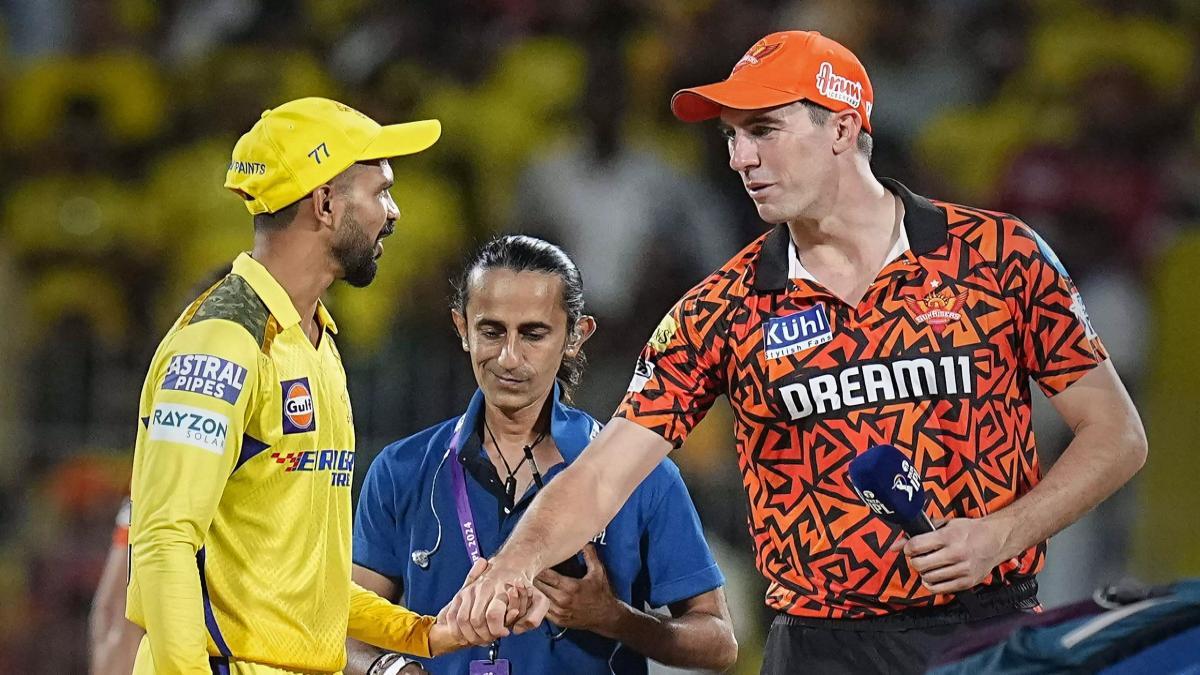(Football news) Sunrisers Hyderabad (SRH) has attacked more than half of the 120 permissible balls in a T20 innings not once, not twice, but three times this season. As a result, they scored 69 aggressive runs against Royal Challengers Bengaluru and 63 against Mumbai Indians, two records, and 67 against Delhi Capitals, which appeared to be on pace for 300.
This is the reason they are such a formidable team this IPL season, particularly when the weather is favorable. By performing one very basic thing, they have expanded the boundaries of what is possible: they have made both ends go bang, bang.
Not for them, the idea of one batter being content with just rotating the strike when the other guy is making perfectly clear just how much is in their favour out there. In Hyderabad, Bengaluru and Delhi, the pitches were less mud and clay and more red carpet.
The same template worked for the one win that they had while chasing. Abhishek Sharma finished that game in virtually a single over of play when he kind of forgot there were 18 more left. Mukesh Chaudhary was hit for 4, 0, 6, 0, 7nb, 6, 4 and that was that. Left-hand batter took down left-arm bowler angling it into his hitting arc. This is what SRH want.
“It’s not just random slogging,” the captain of Sunrisers Hyderabad, Pat Cummins said at the press conference on Sunday after they lost to Chennai Super Kings (CSK) by 78 runs. “Like our guys still pick their bowlers. It’s something that we talk about – picking match-ups that suit you and if it’s a green light, then you know, go for it. If it’s not your match-up, then be a little bit smarter about it. I’ve been really happy how the boys have been going about it. Even tonight, I don’t think there were too many reckless shots.”
A little over three weeks ago, in the first meeting between these two sides, Sunrisers Hyderabad had gotten so far ahead that even when spin came on and throttled the run-scoring to the point that there were 6.1 overs without a boundary, the required rate they were looking at was still a run-a-ball. This is the reason Cummins believes they are actually set up to be a chasing team.
So why then does their run-rate drop from 11.74 batting first all the way down to 8.76 batting second? Why do their sixes – the very reason behind their revival – slump from 76 to 36? And why did they lose this game, getting bowled out for 134 when they’ve been able to put up totals of twice as many, twice?
Because they keep attempting to kill chases, instead of trying to last through them, and it’s resulted in needless wickets. Against RCB, they lost four in the powerplay. Against CSK, they lost three. That’s a lot of resources being burnt in too short a time leaving them with too big an ask. Each of Sunrisers Hyderabad’s failures batting second have involved them having to get to targets of 200-plus. And the only time they looked like they might was when Heinrich Klaasen did Heinrich Klaasen things.
Even in that match, against Kolkata Knight Riders (KKR), they were 133 for 4 after 16 overs facing a required rate of 19. They will want to do better at building their innings, or re-building them rather. Because it is easy to look at every ball as a six-hitting opportunity when you have support down the order. But when you’re running out of partners, you can’t just go bang bang. You need other skills.
Lucknow Super Giants had those. They too stumbled in the powerplay against CSK but recalibrated. In the end, it didn’t matter that they had to stomach a period of play where they could score only three boundaries in five overs. By ensuring that they had a set top-order batter out there, they were able to capitalise when CSK had to turn to a couple of their weaker bowlers.
Dew played a big role in ensuring that outcome, which was probably why, against Sunrisers Hyderabad, at every opportunity, eight members of the Chepauk groundstaff broke onto the field, dragging four ropes between them. Two for the off side and two for the leg side. One trip up. Another trip down.
It must have helped. CSK’s spinners couldn’t even bowl in that LSG defeat. Here, Ravindra Jadeja was able to get through his four overs and was hit to the boundary only once. It was another example of how one team had all bases covered. The other came in with great plan A but little else.
Aiden Markram did try though. He gave up looking at the asking rate that kept shooting up. His focus, instead, was in making sure he could be out there in the last few overs. At 63 for 3 in the eighth over, he was 25 off 17 with a strike rate of 147. He was a snowball just beginning to roll downhill.
Except all of a sudden, Matheesha Pathirana popped up and made his middle stump go splat. The Chepauk DJ chose that moment to drop the needle on a glorious track from way back in 2006 containing the lyric enga area, ulla varathe, ooooh, oooh!, which loosely translated means “this is our territory, don’t you come in.” Michael Hussey put that in slightly better cricketing terms in his post-match press conference.
“I know some of the scores have been really big around the country,” The CSK batting coach said. “260-plus. 275 in some places. But not all conditions are like this. I mean, we’ve got a pretty big ground here in Chennai. The boundaries are very big. The pitch sometimes can be a little slow, it can take some spin. Okay, the dew can help skid it on sometimes, but we try and assess the conditions as quickly as we can.
“If we’ve lost wickets up front, sometimes you do need to take a little bit of time to stabilise before then launching again. In other conditions, maybe like in Kolkata or maybe in Delhi, because if the conditions suit the batsmen, you can just keep going, especially if it’s a small ground, flat batting pitch, lots of bating resources, then you can have the confidence to keep swinging and you’d have more chances of scoring runs. But here at Chepauk, we need to adapt to the conditions, understand the conditions and play accordingly.”
If Travis Head and Abhishek Sharma had been successful in their early attempts to clear the boundary, as they would be telling themselves right now, the outcome of this game very well could have been different, but it is still the best-case scenario. To demonstrate that it has the depth to persevere when things aren’t going their way, Sunrisers Hyderabad’s excellent batting lineup has to put in more effort.









